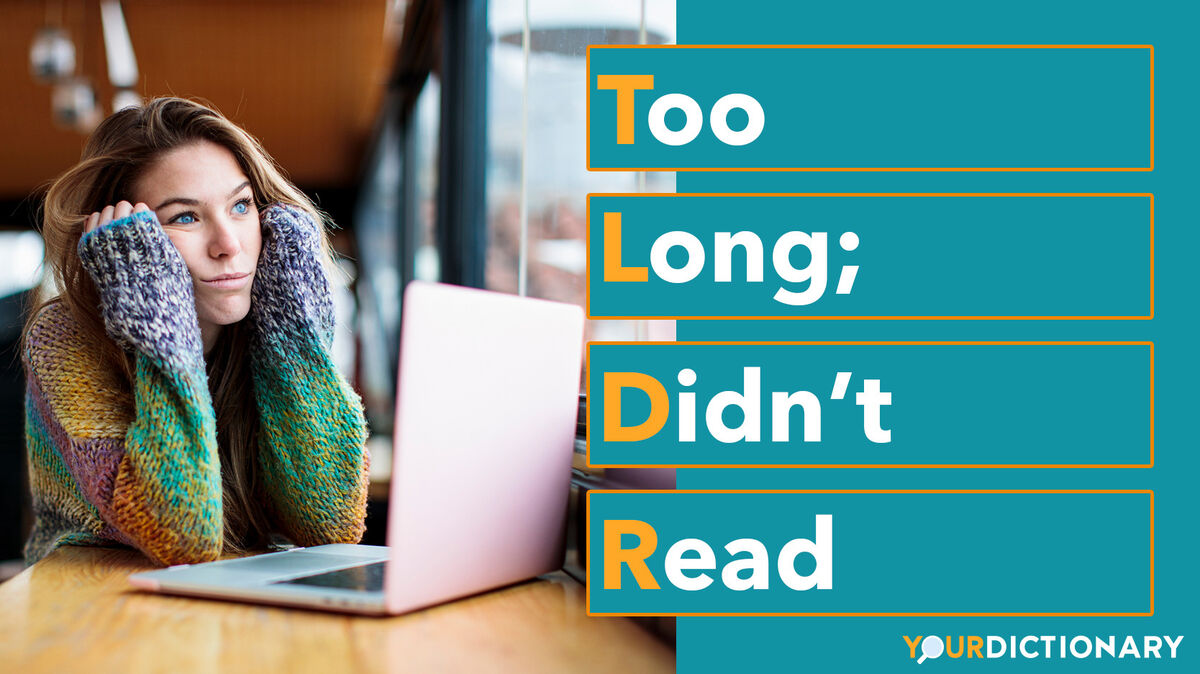
Have you ever wanted to read an article online, but it’s just too long to interest you? Your response may be “TL;DR.” TL;DR is internet slang for "Too Long; Didn’t Read." It's a quick way to indicate that a piece of writing is boring or not worth your time.
TL;DR as an Abbreviation
The initialism TL;DR (also used as lowercase tl;dr) usually appears in the comment section of a long online article sometimes known as a “wall of text." You may see it on social media and message boards as well, but you probably won't hear it in spoken conversation.
History of TL;DR
The first known use of TL;DR was in online forums in the early 2000s. TL;DR has been in use since 2004. The shorter TLDR (no semicolon) has become even more popular than its original version. Today, both spellings of the term are commonly used online.
Other Meanings of TL;DR
In fields such as computer programming, TL;DR can mean “Too Lazy; Didn’t Research.” It means that employees with a short attention span may skip important parts of the research process, leading to low-quality work.
Usage of TL;DR
TL;DR as a comment basically means “I don’t care enough about this to actually read it.” Because it often comes across as rude, TL;DR should not be used in a professional setting.
A commenter might simply say TL;DR after:
a lengthy online article
a wordy social media post
a long message board post
a short, unsatisfactory post (as a sarcastic reply)
a question about a book or homework assignment (Did you read last night’s homework? No, TL;DR.)
Examples of TL;DR
TL;DR allows writers to cut to the chase. Examples of TL;DR that you might see after articles include:
- after a personal blog post - TL;DR: I made a bad choice and I paid for it.
- after an article on ocean pollution - The TL;DR version is this: Don’t use plastic straws anymore.
- after a travel article - TL;DR for those in a hurry: the Grand Canyon is worth the drive.
- after a lengthy opinion post - TL;DR if you’re still reading: Racism is still a huge problem in suburban areas.
- after the TL;DR of a social media post - TL;DR for the TL;DR: Don’t do what I did.
Examples of TL;DR as a Summary
The "TL;DR version" is a short summary or general moral of a longer post or article. A writer can add a TL;DR to provide a quick snippet of what they are trying to say.
For example:
Allowing children to do their own homework has many benefits. First,
children can practice time management and responsibility by planning out their work process. They can learn when to ask for help and when to persevere through their scholarly struggles. Parents can see what their children are doing in school and better identify areas of success and growth in the classroom. Younger children can get extra practice with basic skills at home, and older children can foster resilience and endurance before going into their next level of education.
TL;DR: Let your kids do their own homework.
Related Abbreviations
TL;DR isn’t the only way to ask for the most important information. Related abbreviations to TL;DR include:
TLDNR - Too Long, Did Not Read (alternate form of TL;DR)
BLUF - Bottom Line Up Front
GTTP - Get To The Point
TMALSS - To Make A Long Story Short